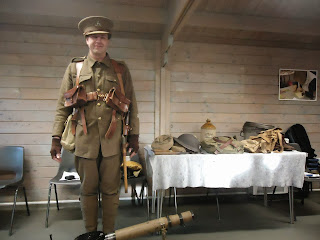We could not leave Warwick without visiting the memorial chapel at Saint Mary's Church and paying our respects to those who had laid down their lives.
Women & Theatre are working in partnership with the Birmingham Hippodrome and the Royal Regiment of Fusiliers Museum (Royal Warwickshire) in the delivery of a participatory heritage project exploring the experiences of young men and boys from Birmingham during WWI.
The project will bring together a group of 14-25 year old males to research the experiences of young recruits during WWI and share them through live performances around an old drill hall site area in Thorp Street, a temporary exhibition at the RRF Museum and this digital archive. We will be updating this blog with material as the project progresses, and hope you will enjoy an insight into the process.
We are very fortunate to have received funding for this project from the Heritage Lottery Fund, The Grimmit Trust, The Cole Charitable Trust, The Roughley Trust, The Rowlands Trust and Service Birmingham. We are also grateful to Chung Ying Garden and the Gallan Group for their permission to use the old Drill Hall site.
Saturday, 30 November 2013
RRF museum visit continued....
Stephanie Bennett (curator at the RRF museum) had kindly arranged for re-enactor Paul Thomson to come along to the session. Paul inspired the boys with his "day in the life of a WWI soldier". He brought in some objects from the period for the boys to handle...
....which we think they rather enjoyed!!
At the end of the day we got the boys started on some 'drill', under the watchful eye of actor and support artist Greg Hobbs, an ex-soldier himself. We see it as a good step towards our production - what do you think?!
Visit to the Royal Regimental Fusiliers (Royal Warwicshire) musem, Warwick - November 2013
In November we visited the RRF museum (Royal Warwickshire) in Warwick to learn more about the living conditions of the soldiers fighting in the First World War. The participants were asked to develop emotion graphs which emphasize the feeling of the soldiers during the Great War and to gather data from different media (notebooks, diaries, newspapers, etc) in order to create complete biographies of soldiers.
They also got to try on some of the uniforms!
(modelled on the right by our Romanian placement student, Andrada!)
Subscribe to:
Comments (Atom)














